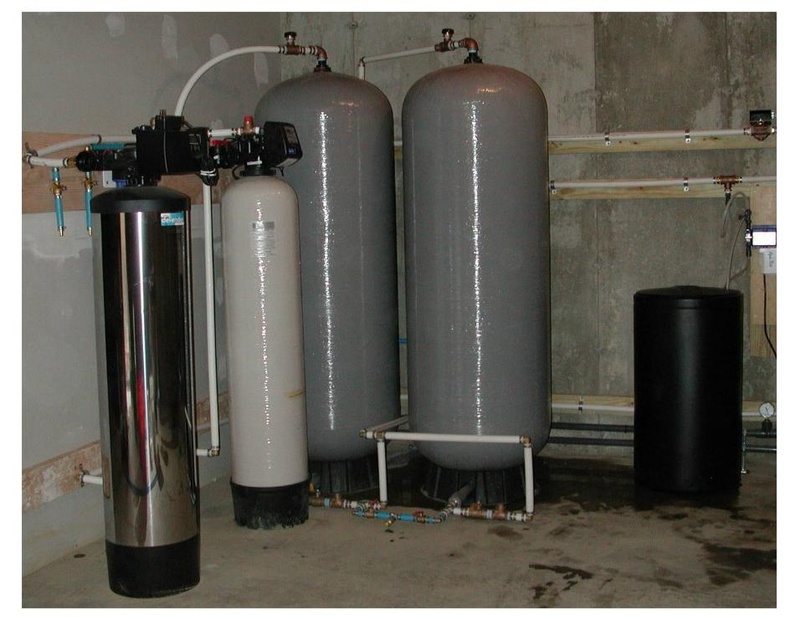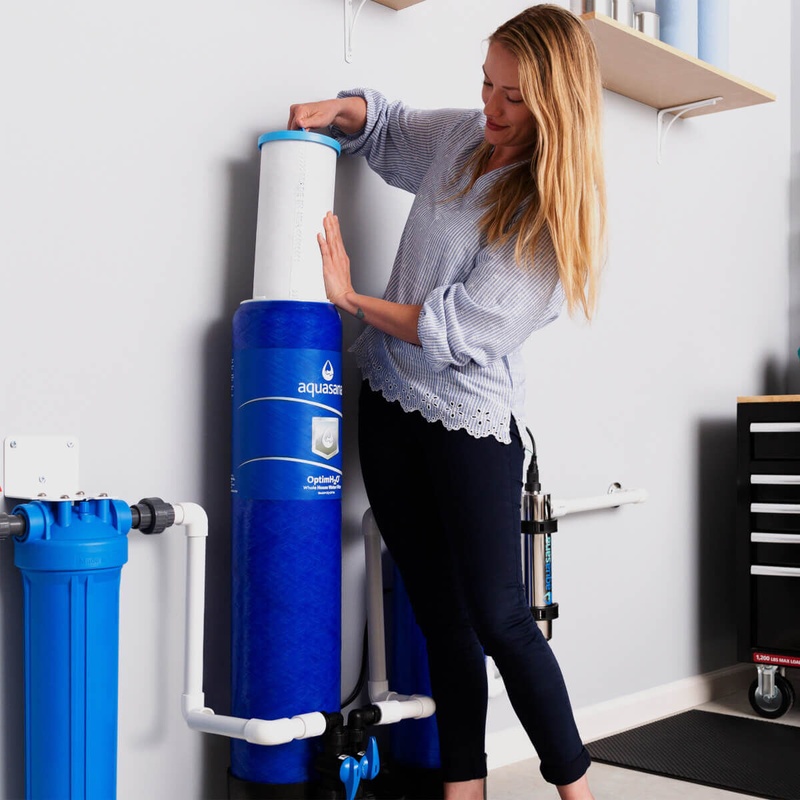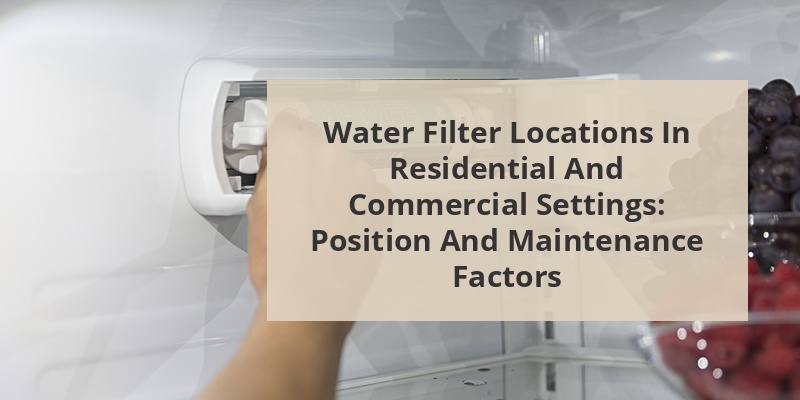Water filters are essential components in many homes and buildings, designed to remove impurities and improve water quality. However, many people struggle to locate water filters in their homes, appliances, or commercial settings. Understanding where water filters are typically located is crucial for proper maintenance, replacement, and ensuring optimal water quality. This article explores the various locations where water filters can be found, how to identify them, and considerations for placement when installing new filtration systems.
Home water filtration systems can be installed in several locations depending on their type and purpose. The most common placement options include under-sink, whole-house, countertop, and point-of-use systems. Each location serves different filtration needs and offers unique benefits.
Content Navigation
Under-Sink Filters
Under-sink filters are installed in the cabinet beneath your kitchen or bathroom sink. These systems connect directly to the cold water line and typically include a separate dispensing faucet installed on the sink deck. Look for a dedicated filter faucet or plastic housing units mounted to the cabinet wall to identify under-sink filters.
Whole-House Filtration Systems
Whole-house water filters are typically located near the main water line where it enters your home, often in basements, crawl spaces, or utility rooms. These systems are larger than point-of-use filters and are designed to filter all water entering the home before it reaches any faucets or appliances.
Countertop Filters
Countertop water filters sit on your kitchen counter and connect to your existing faucet with a diverter valve. These filters are easily visible and don’t require permanent installation, making them popular for renters or temporary living situations.
Faucet-Mounted Filters
These compact filters attach directly to the end of your faucet. They’re immediately visible and accessible, offering a straightforward solution for filtering tap water without significant installation requirements.
| Filter Location | Installation Complexity | Visibility | Maintenance Accessibility |
|---|---|---|---|
| Under-Sink | Moderate | Hidden | Moderate |
| Whole-House | Complex | Hidden | Moderate |
| Countertop | Simple | Visible | Easy |
| Faucet-Mounted | Very Simple | Visible | Very Easy |
Water Filter Locations in Different Appliances

Many modern appliances incorporate built-in water filtration systems. Knowing where these filters are located is essential for regular maintenance and ensuring your appliances function properly.
Refrigerators with Water Dispensers
In refrigerators with water dispensers or ice makers, filters are typically located in one of three places: inside the refrigerator compartment (often in the upper right corner), at the base grille (bottom front), or in the back of the refrigerator. Most manufacturers place a small icon near the filter location to help identify it.
Call 888-896-7031 for Free Local HVAC Quotes – Compare and Save Today!
Dishwashers
While not technically water filters in the traditional sense, dishwashers have filtration systems to prevent food particles from recirculating. These filters are usually located at the bottom of the dishwasher tub, beneath the lower spray arm.
Washing Machines
Some washing machines include water filters or screens to protect the inlet valves from debris. These are typically located where the water supply hoses connect to the machine. Additionally, drain pumps often have accessible filters usually found behind a small panel on the front-lower section of the machine.
Water Coolers and Dispensers
Office water coolers and standalone water dispensers often contain filters inside the unit, typically accessed through a panel in the back or bottom of the dispenser. These filters may be overlooked during regular maintenance.
Finding Water Filters in Commercial Settings

Commercial buildings implement filtration systems differently than residential settings. Water filters in commercial environments are often larger and located in utility areas away from public spaces.
Restaurants and Food Service
Restaurants typically have multiple filtration systems. Look for water filters beneath sinks, connected to beverage dispensing systems, or in dedicated utility rooms. Ice machines, coffee makers, and steamers often have their own specialized filtration systems.
Office Buildings
In office buildings, central water filtration systems are usually located in mechanical rooms or basements. Individual filters may also be found in break rooms, attached to water fountains, or built into water coolers.
Call 888-896-7031 for Free Local HVAC Quotes – Compare and Save Today!
Schools and Public Facilities
Public facilities typically install filtration systems at the main water entry point or strategically throughout the building. Water fountains and bottle filling stations often have their own filtration units mounted nearby or inside the unit itself.
| Commercial Setting | Common Filter Locations | Filter Types |
|---|---|---|
| Restaurants | Beneath sinks, behind beverage systems, utility rooms | Carbon, sediment, scale inhibitors |
| Office Buildings | Mechanical rooms, beneath water coolers | Carbon block, reverse osmosis |
| Schools | Main water entry, behind drinking fountains | Lead reduction, carbon, particulate |
| Hospitals | Utility rooms, individual departments | Medical-grade, ultraviolet, reverse osmosis |
How to Identify if You Have a Water Filter

Not sure if your home or specific appliance has a water filter? There are several indicators that can help you determine if a filter is present and where it might be located.
- Check beneath sinks for plastic canisters or filter housings connected to the water line
- Look for dedicated filter faucets on your sink deck (typically smaller than the main faucet)
- Inspect refrigerator compartments for cylindrical filter cartridges
- Examine your main water line where it enters your home for inline filter systems
- Read appliance manuals which typically indicate filter locations and maintenance schedules
- Look for water quality change indicators such as taste, color, or flow rate differences between various faucets
Choosing the Right Location for a New Water Filter
When installing a new water filtration system, the location can significantly impact its effectiveness, maintenance requirements, and longevity. Consider these factors when determining where to place your water filter.
Accessibility for Maintenance
Place your filter where it can be easily accessed for regular cartridge replacements. Filters in difficult-to-reach locations are more likely to be neglected, reducing their effectiveness and potentially causing water quality issues.
Protection from Temperature Extremes
Most water filters operate best in moderate temperature environments. Avoid placing filters in areas exposed to freezing temperatures or excessive heat, which can damage components and reduce filtration efficiency.
Space Considerations
Ensure there’s adequate space around the filter for maintenance and, if necessary, drainage. Some systems, particularly reverse osmosis units, require significant space for storage tanks and multiple filter stages.
Water Pressure Needs
Consider how the filter’s location will affect water pressure. Whole-house systems should be installed where they won’t significantly reduce pressure throughout the home. Point-of-use systems have less impact on overall pressure but should still be positioned to maintain adequate flow.
| Filtration Need | Recommended Location | Benefits |
|---|---|---|
| Drinking water only | Under-sink or countertop | Economical, focuses filtration where needed most |
| Whole-home protection | Main water line entry point | Filters all water, protects plumbing and appliances |
| Specific contaminant removal | Point-of-entry for whole-house issues, point-of-use for drinking | Targeted filtration for specific concerns |
| Hard water treatment | Main water line before water heater | Protects appliances and plumbing from scale buildup |
Maintenance Considerations Based on Filter Location
The location of your water filter directly impacts maintenance requirements and challenges. Understanding these considerations helps ensure your filtration system continues to perform effectively.
Access for Filter Changes
Filters in easily accessible locations are more likely to receive timely maintenance. Under-sink filters may require clearing storage items before access, while whole-house filters in crawl spaces might need special equipment or professional assistance.
Environmental Factors
Filters installed in damp locations like under-sink cabinets or basements may be prone to mold or mildew growth. Regular inspection and keeping these areas dry can prevent additional water quality issues.
Seasonal Considerations
Outdoor or garage-located filters must be protected from freezing temperatures in winter months. Some homeowners opt to bypass these systems during extreme weather or install insulated covers to protect the equipment.
Tips for Getting the Best HVAC Prices
- Prioritize Quality Over Cost
The most critical factor in any HVAC project is the quality of the installation. Don’t compromise on contractor expertise just to save money. - Check for Rebates
Always research current rebates and incentives — they can significantly reduce your overall cost. - Compare Multiple Quotes
Request at least three estimates before making your choice. You can click here to get three free quotes from local professionals. These quotes include available rebates and tax credits and automatically exclude unqualified contractors. - Negotiate Smartly
Once you've chosen a contractor, use the proven strategies from our guide — How Homeowners Can Negotiate with HVAC Dealers — to get the best possible final price.
- Create a maintenance calendar based on manufacturer recommendations and your water usage
- Keep replacement filters on hand to ensure immediate replacement when needed
- Consider professional service contracts for difficult-to-access systems
- Install filter life indicators to monitor performance and replacement timing
- Document filter locations and maintenance procedures for future homeowners or service professionals

